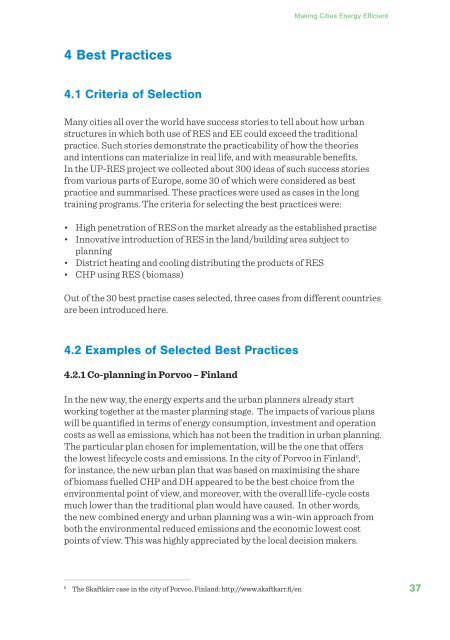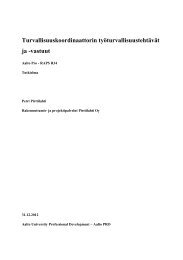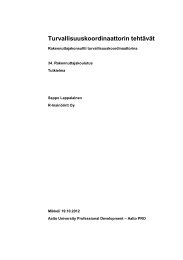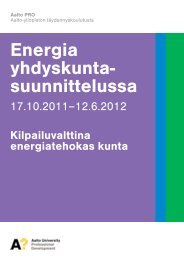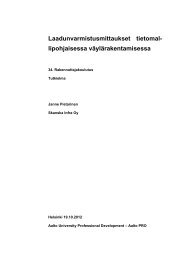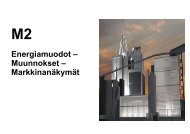Urban and Regional Planning adopting RES - Sitra
Urban and Regional Planning adopting RES - Sitra
Urban and Regional Planning adopting RES - Sitra
You also want an ePaper? Increase the reach of your titles
YUMPU automatically turns print PDFs into web optimized ePapers that Google loves.
Making Cities Energy Efficient<br />
4 Best Practices<br />
4.1 Criteria of Selection<br />
Many cities all over the world have success stories to tell about how urban<br />
structures in which both use of <strong>RES</strong> <strong>and</strong> EE could exceed the traditional<br />
practice. Such stories demonstrate the practicability of how the theories<br />
<strong>and</strong> intentions can materialize in real life, <strong>and</strong> with measurable benefits.<br />
In the UP-<strong>RES</strong> project we collected about 300 ideas of such success stories<br />
from various parts of Europe, some 30 of which were considered as best<br />
practice <strong>and</strong> summarised. These practices were used as cases in the long<br />
training programs. The criteria for selecting the best practices were:<br />
• High penetration of <strong>RES</strong> on the market already as the established practise<br />
• Innovative introduction of <strong>RES</strong> in the l<strong>and</strong>/building area subject to<br />
planning<br />
• District heating <strong>and</strong> cooling distributing the products of <strong>RES</strong><br />
• CHP using <strong>RES</strong> (biomass)<br />
Out of the 30 best practise cases selected, three cases from different countries<br />
are been introduced here.<br />
4.2 Examples of Selected Best Practices<br />
4.2.1 Co-planning in Porvoo – Finl<strong>and</strong><br />
In the new way, the energy experts <strong>and</strong> the urban planners already start<br />
working together at the master planning stage. The impacts of various plans<br />
will be quantified in terms of energy consumption, investment <strong>and</strong> operation<br />
costs as well as emissions, which has not been the tradition in urban planning.<br />
The particular plan chosen for implementation, will be the one that offers<br />
the lowest lifecycle costs <strong>and</strong> emissions. In the city of Porvoo in Finl<strong>and</strong> 6 ,<br />
for instance, the new urban plan that was based on maximising the share<br />
of biomass fuelled CHP <strong>and</strong> DH appeared to be the best choice from the<br />
environmental point of view, <strong>and</strong> moreover, with the overall life-cycle costs<br />
much lower than the traditional plan would have caused. In other words,<br />
the new combined energy <strong>and</strong> urban planning was a win-win approach from<br />
both the environmental reduced emissions <strong>and</strong> the economic lowest cost<br />
points of view. This was highly appreciated by the local decision makers.<br />
6<br />
The Skaftkärr case in the city of Porvoo, Finl<strong>and</strong>: http://www.skaftkarr.fi/en<br />
37


